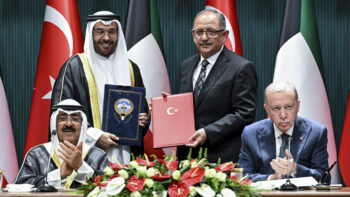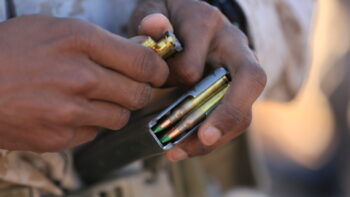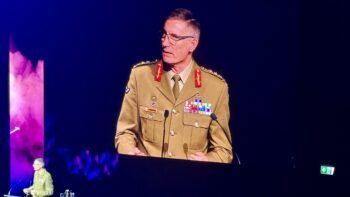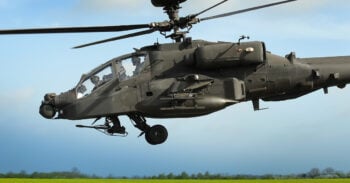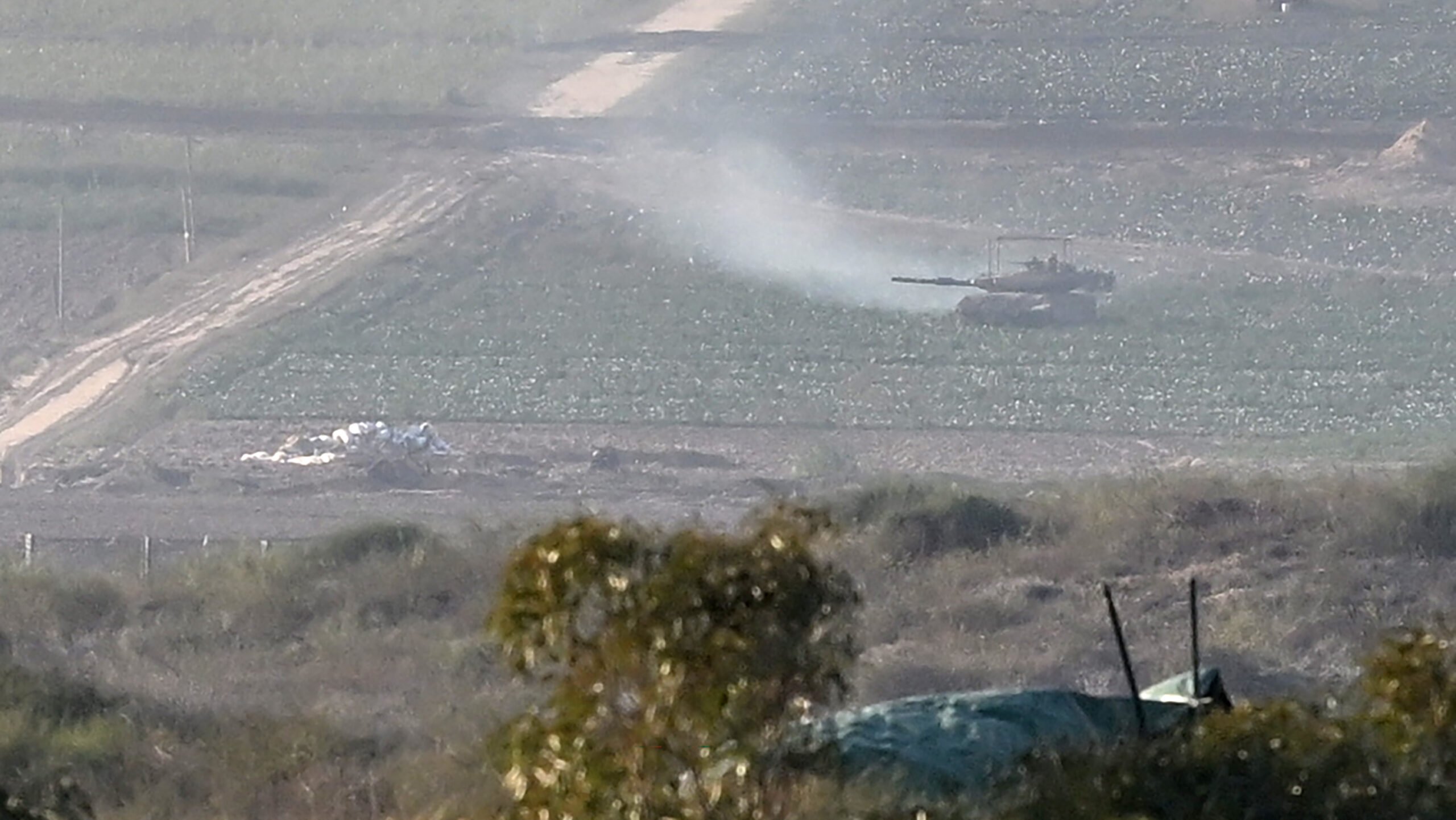
A tank moves through a field near the border with Northern Gaza after a week long ceasefire ended on December 1, 2023 seen from Sderot, Israel. (Photo by Alexi J. Rosenfeld/Getty Images)
While the pause in fighting between Hamas and Israel lasted longer than many expected, on Dec. 1 the conflict in Gaza resumed — and shows no signs of ending anytime soon. In this new op-ed, Jonathan Lord of the Center for a New American Security argues that for both Israel’s security and the safety of the Palestinian people, the US needs to step up and organize a multi-national security force in Gaza.
More than 55 days since Hamas’ Oct. 7 attack on Israel, the Israel Defense Forces’ (IDF) Gaza campaign lacks a critical component, betraying a major strategic flaw: the absence of a plan to provide security, sufficient aid, and critical services to a largely-displaced and vulnerable Palestinian population.
If the IDF’s goal is to dismantle Hamas, its current path — which leaves the Palestinian people vulnerable to recruitment by anti-Israeli forces — means it will fail. To succeed, a stabilization operation is needed to fill the vacuum created by the IDF’s combat operations.
This missing stabilization operation, while critical to Israel’s success, cannot be executed by the IDF, as Israel remains resolved not to re-occupy Gaza, from which it withdrew in 2005. A UN force will prove a non-starter for Israelis, who have good reason to mistrust the effectiveness of UN peacekeeping forces, based on UNIFIL’s fecklessness in preventing Hezbollah’s military build-up on Israel’s northern border.
The only credible solution remaining is a US-led, multi-national coalition force that provides the necessary interim security and governance in the Gaza Strip to get Israelis and Palestinians to the fabled “day after.”
Hamas is both a terrorist organization and an insurgency. As the former, since its inception in 1987, it has waged attacks on Israel’s civilian population and sought Israel’s destruction. As the latter, it has ruled Gaza since 2007, when it seized control by murdering and expelling Palestinian Authority leaders. It is Hamas’ role in Gaza as the de-facto governing body and an ideological movement, legitimized by its perceived resistance to Israel, that prevents Israel from destroying it through combat operations alone.
The IDF is well-versed in counterterrorism operations, but it has no recent experience with counterinsurgency, having relied on advanced technological capabilities to contain or neutralize threats posed by Hamas, while leaving it in place to rule Gaza. Washington rushed a seasoned American military general with counterinsurgency experience to Israel at the start of the conflict to advise the Israelis, as it was evident to anyone with access to Israel’s military leaders or strategic planners that the IDF was about to embark on a mission unlike any for which it had trained or prepared. Lt. Gen. James Glynn’s visit, and the “hard questions” asked of Israel’s political and military leaders by President Biden and his advisors, had a significant impact on Israeli military planning in the immediate wake of the Oct. 7 attack.
While the IDF has demonstrated it has more than enough capability to take Hamas militants off the battlefield, it has shown no strategic awareness that the void left by Hamas’ removal must be filled immediately. In fairness to Israel, US national security policymakers have avoided demonstrating any awareness of that either, and instead have focused their efforts on getting more humanitarian aid into the Gaza Strip, and reportedly, pressing Israel to work harder at mitigating civilian harm as it recommences its operation now that the ceasefire has ended. While both efforts are admirable, they will prove insufficient to defeat Hamas and enable a resumption of a peace process to which President Joe Biden alluded in a Nov. 18 Washington Post editorial.
Unless additional action is taken to fill the governance and security voids, and to expand by magnitudes Palestinians’ access to services and aid, the conditions in Gaza will only serve to feed Hamas’ recruitment cycle. Young Palestinians will not need to be card-carrying members to feel compelled to figuratively, and in some cases literally, pick up the guns dropped by fallen Hamas terrorists and continue to “resist” Israel.
The IDF operation in Gaza has exacted a considerable toll on Palestinian civilians, who Hamas has methodically used as human shields, and then cynically exploited in a highly effective social media campaign meant to influence global public opinion to pressure Israel to end the military incursion before Hamas can be dislodged. Whether or not one believes the IDF has done enough to mitigate civilian harm, it has directed Palestinians away from active combat zones, and sought to warn civilians of imminent hostilities. In the early days of the conflict, the IDF instructed Palestinians in Gaza’s north to move south, which most have done.
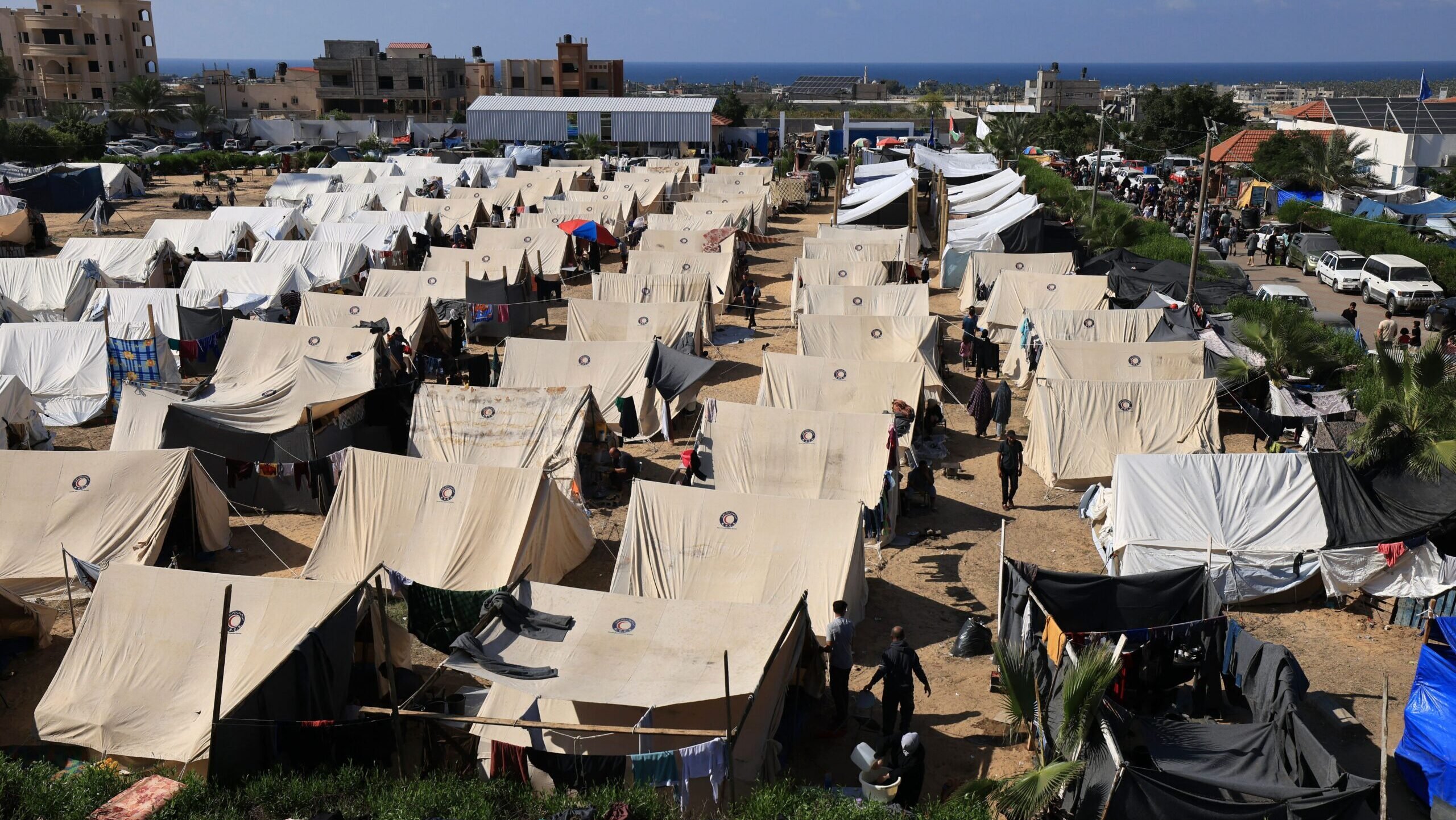
TOPSHOT – Tents for Palestinians seeking refuge are set up on the grounds of a United Nations Relief and Works Agency for Palestine Refugees (UNRWA) centre in Khan Yunis in the southern Gaza Strip on October 19, 2023, amid the ongoing battles between Israel and the Palestinian group Hamas. (Photo by MAHMUD HAMS / AFP) (Photo by MAHMUD HAMS/AFP via Getty Images)
Overall, 1.7 million Palestinians left northern Gaza at the direction of the IDF. Now, most of Gaza’s 2.3 million residents are internally displaced and living in and around the areas in which the IDF is planning to advance next. The IDF will not allow Palestinians displaced from the north to return yet. There is likely little to return to, and when the IDF decides to implode Hamas’ tunnels which are located directly below Gaza’s densest urban neighborhoods, it will likely destroy what little is left that may be inhabitable. Realistically, Palestinians will not be able to return north until hostilities have ended and reconstruction has begun.
Once the IDF completes its clearance of Gaza City and moves south toward Khan Younis and Rafah, where it assesses Hamas retains military cohesion and senior leaders, the need for stabilization operations will only grow. With the preponderance of Gaza’s population now in the southern half of the Gaza Strip, IDF operations in Khan Younis and Rafah will cause many already displaced Palestinians to move again, and likely displace more that reside in the area.
While the Biden administration has insisted the IDF do more to displace fewer civilians, remember, Hamas has a vote. And Hamas will do everything in its power to put civilians in harm’s way. While further disruptive to their lives, Palestinian civilians’ best hope is to move away from the urban areas in the south toward safe zones — currently unguarded.
Absent on-the-ground governance and security, Gaza’s displaced and vulnerable communities will serve as a breeding ground for Hamas recruitment and even more fanatical hatred of Israel. To arrest the perpetual cycle of violence and instability, there is an absolute need for stabilization operations to begin now, meeting Palestinians where they are currently located — and preparing a safe haven for Palestinians to move to when the IDF operations shift further south.
A Multi-National Military Presence In Gaza
A coalition-based military force could secure and hold territory cleared of Hamas by the IDF. With US Central Command as a coordinating body, a multi-national force could significantly accelerate the flow of humanitarian aid, establish hospitals, emergency services, and provide shelter to Palestinians. Arabic-speaking forces from Gulf states could serve an important, forward-facing civil affairs role, engaging and communicating directly with Palestinian communities.
How might Biden enlist additional partners and allies into a coalition to perform stabilization in Gaza? It was actually French president Emmanuel Macron that suggested last month that the Global Coalition to Defeat ISIS expand its mandate to include Hamas. Among France and other European nations, there might be willingness to participate in a US-led coalition, particularly if Biden aide Brett McGurk (who very effectively held the C-ISIS coalition together over two presidential administrations) argues that this military effort would save civilian lives and enable the pursuit of lasting and long-elusive peace between Israelis and Palestinians.
Understanding the importance of keeping civilians out of the line of fire, the IDF established a safe zone along the coast at al Mawasi, where the UN has constructed a tent city and enabled the provision of aid. While this is an important step, it has already proven insufficient to need, and suffers from overcrowding and poor conditions. Absent a military presence to secure the area and to greatly expand the provision of aid on the back of western military logistics, Mawasi will become a Palestinian version of al-Hol — a refugee and displaced persons camp in Syria, notorious for its deplorable conditions and for serving as an incubator for ISIS’ next generation of fighters.
The US already has useful assets in the region that could execute this mission. Shortly after the conflict began, Biden deployed the Bataan Amphibious Ready Group and the 26th Marine Expeditionary Unit as part of the mission to deter Hezbollah and other Iran-supported groups from expanding the Israel-Hamas War to other fronts. These forces, currently just sitting at sea, could establish a beachhead at al Mawasi, and in coordination with the IDF, expand the size and capacity of the humanitarian safe zone. At the direction of the president, and with the consent of Israel, CENTCOM could coordinate partner and allied militaries to assist in establishing and securing additional safe zones in areas the IDF has deemed clear of Hamas presence.
The Kerem Shalom crossing between Israel and southern Gaza remains closed, as Hamas retains control of the area on the Gaza side. Once the IDF has cleared the area of Hamas, it should open Kerem Shalom and allow a US military-led coalition to stage humanitarian supplies in Israel and facilitate their flow into Gaza through that crossing. If the IDF’s ground mission expands to Rafah, where Hamas retains control, influence, and significant tunnel infrastructure, it could risk the closure of the only crossing through which humanitarian aid is now entering Gaza. The preparation of a second entry point to either replace or supplement the Rafah crossing is not only prudent, but essential.
While surely unappealing politically, a US military-led stabilization operation is necessary to enable Hamas’ defeat. Absent its immediate implementation, Israelis and Palestinians will never see “the day after.”
The irony isn’t lost on this author that a president who was pilloried in his first year for executing a messy withdrawal of troops from a CENTCOM theater of operation (Afghanistan) would likely be pilloried for returning them to another CENTCOM theater of operation (Gaza) in his fourth year. The circumstances, however, are vastly different. Biden saw no strategic end to Afghanistan, but he has already articulated a strategic end to the current war in Gaza.
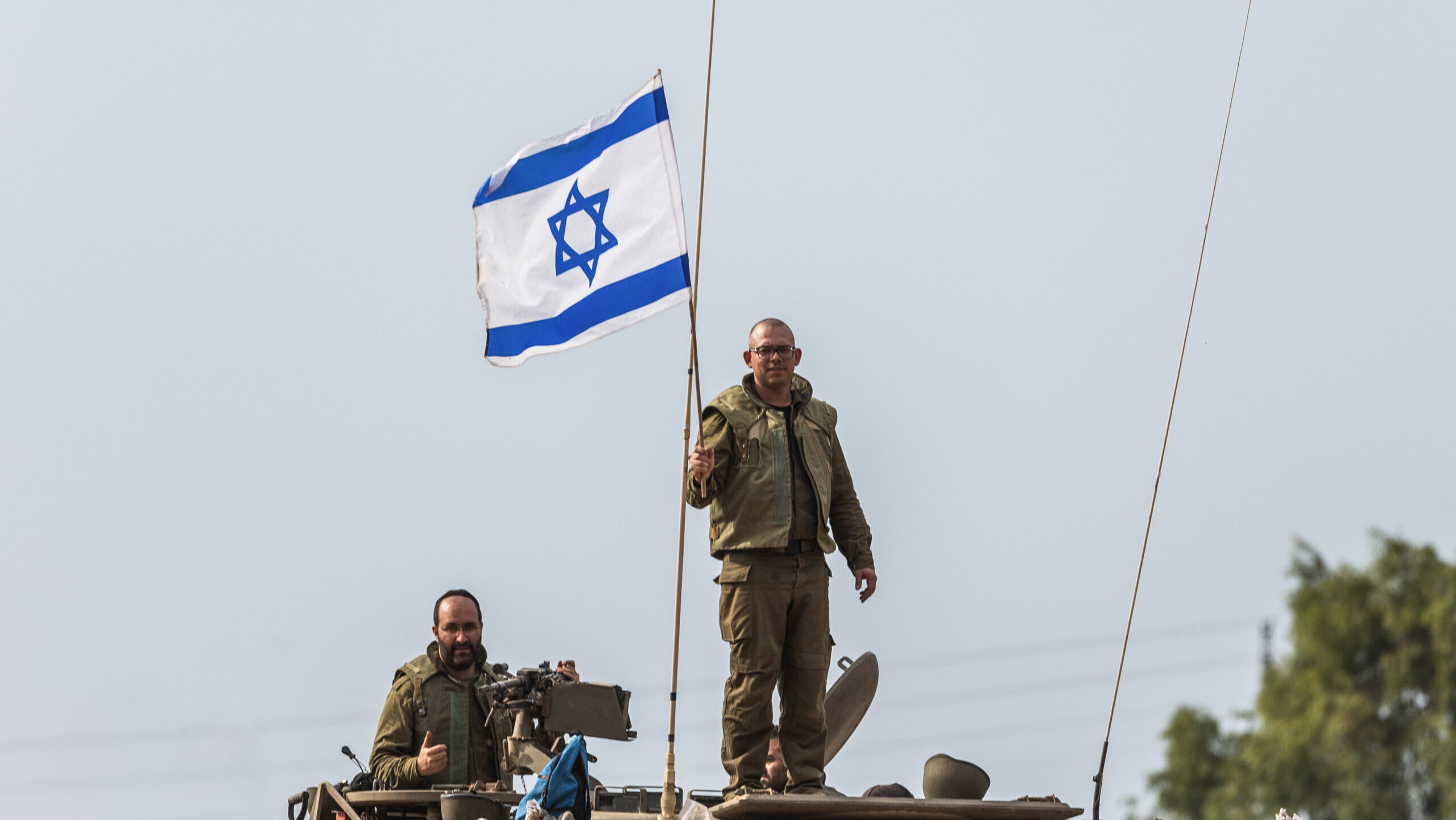
Israeli artillery forces are deployed near the Israel-Gaza border. Fighting between Israeli soldiers and Islamist Hamas militants continues in the border area with Gaza. (Ilia Yefimovich/picture alliance via Getty Images)
The greatest risk Biden faces is a breakdown of a future peace process that results in US forces getting stuck in Gaza. The history of the Israel-Palestinian Conflict is littered with well-intentioned, half-implemented peace initiatives, such that Israelis will ruefully joke: “There’s nothing more permanent than the interim.” However, there is diplomatic gain to be made, as US military presence on the ground can give Biden significant leverage to drive a peace process forward — and could help bring back to reality what the White House hoped to be a key foreign policy win ahead of the 2024 election: Normalizing relations between Saudi Arabia and Israel.
On Oct. 6, the administration was exploring an Israel-Palestinian peace component to a Saudi normalization deal. It now has the opportunity to pull Saudi normalization through the eye of a future Israel-Palestinian peace process. Riyadh’s support for stabilization, and ultimately, economic support for reconstruction in Gaza, as a component of a peace process will bring Israelis and Saudis shoulder-to-shoulder, and could make the normalization of relations fait accompli.
It would take great political courage to make the argument before the American people, less than one year before an election, that this sacrifice is necessary, and ultimately, essential to restoring a pathway to peace in the Middle East. But if President Biden has demonstrated anything these past seven weeks, it’s that he has no shortage of principled political courage.
While there is a moral imperative to limit civilian harm and Palestinian suffering in Gaza, Israel has a security imperative to do so as well. To achieve its goals, it must consider how to separate Hamas from the civilian population both geographically and ideologically.
President Biden has stated that a peace process that results in two states for two peoples must resume on “the day after,” once Israel succeeds in its combat operation to destroy Hamas. But to enable that success, something must fill the governance and security vacuum immediately; otherwise, the chaos will breed more terrorism and extremism, which will require more combat, and the cycle will continue. Biden has demonstrated remarkable and principled leadership by providing unwavering support to Israel in its moment of crisis, but ultimately, history will judge this support insufficient to achieve his own stated goals for peace in the region.
For the sake of Israelis, Palestinians and the hope of future peace, President Biden, who has done so much to support America’s closest Middle Eastern partner, must do – and risk – more.
Jonathan Lord is a senior fellow and the director of the Middle East Security Program at the Center for a New American Security, a former staff member for the US House Armed Services Committee, a former Iraq country director in the Office of the Under Secretary of Defense for Policy, and a former political military analyst in the Department of Defense.
Kuwait’s new ‘executive protocol’ with Turkey could mean new weapons, training
“As the Kuwaitis work to modernize their military, Ankara eyes the lion’s share of Kuwait’s defense procurements,” analyst Ali Bakir told Breaking Defense. “Turkey is willing to offer a range of its modern, cost-effective and highly capable weapons…”

















